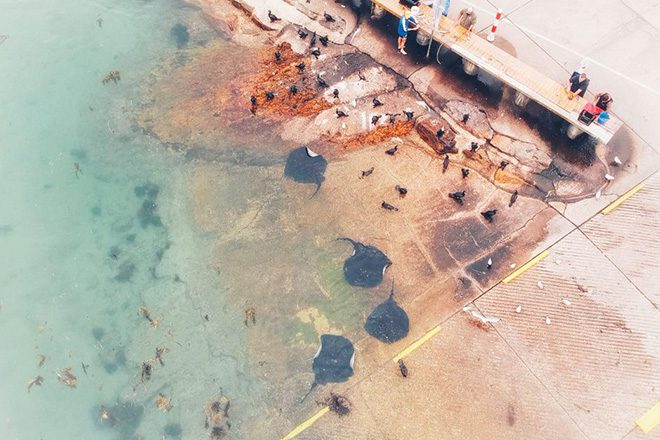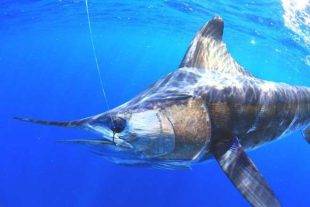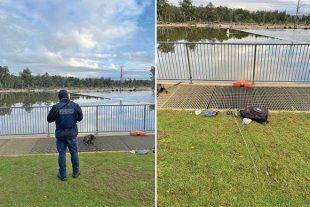Rays are common around fish cleaning tables and play an important role as scavengers.
DPI discourages fishers from deliberately targeting rays or interacting with them at boat ramps and cleaning table areas due to their local significance and ecological value.
They are wild animals and with any wildlife it is important to act responsibly around them and treat them with respect. Rays also play a valuable role in cleaning up fish scraps at many boat ramps and cleaning table areas.
Despite being equipped with large barbs on their tails, stingrays will only lash out if they feel threatened and cannot escape. Stingrays will often swim away before you get too close, but if you startle them or accidentally step on them, they may use their barb to defend themselves.
Rays are often seen feeding on fish scraps discarded by fishers at many boat ramps and cleaning table areas in NSW.
Research by Macquarie University and DPI has shown that the discarding of fish waste into the water can alter the movements and behaviour of these rays, so it is important to dispose of your fish waste responsibly.
Use facilities available at the cleaning table to dispose of your fish waste. Some boat ramps in the Bega Valley now have fish waste recycling bins.
Make sure you look out for them if you are in the area!
Alternatives to discarding fish waste into the water include taking it home and using it to make fish stock, retaining it for burley/crab bait, using it as compost or simply disposing of it in your household rubbish.
You can also donate your frames to the NSW Research Angler Program.
The most common types of rays found around fish cleaning sites in NSW are Smooth Stingrays and Southern Eagle Rays.
Smooth Stingrays are a large stingray, and they are dark above with a row of white dots down each side and pale below with a thick tail.
Southern Eagle Rays have pointed wings and their upper surface is olive-green, dark brown or yellowish, with grey or pale blue markings, and the underside is white.
Keep a look out for signage popping up in hot spot areas such as jetties, boat ramps and near cleaning tables in NSW, this is aimed at creating awareness and discourage behaviour that disturb ray species.
 Bush 'n Beach Fishing Magazine Location reports & tips for fishing, boating, camping, kayaking, 4WDing in Queensland and Northern NSW
Bush 'n Beach Fishing Magazine Location reports & tips for fishing, boating, camping, kayaking, 4WDing in Queensland and Northern NSW








